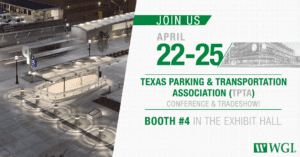
Join WGI’s Parking Experts at the 2019 Texas Parking & Transportation Association (TPTA) Conference
Nicole Chinea, Senior Project Manager with our Parking Solutions division, serves on the TPTA Board of Directors and is this year’s Conference Chair.
Learn from award-winning professionals — explore our whitepapers, blogs, and the latest industry updates.
Join our dynamic organization of engineers, land surveyors, landscape architects, environmental scientists, and architects!
Talk to a market leader today! We’ll answer any questions you have about our professional services.

Download this article as a PDF
As land values continue to rise across the United States, many developers are looking to underground parking as a way to meet their parking needs while maximizing the value of their land. By building parking underground, valuable surface space can be reserved for the development of mixed-use, commercial, retail, or residential properties.
Underground parking also allows the city or developer to take full advantage of available street frontage for the placement of retail and commercial uses. Though it’s more expensive to develop and maintain, underground parking provides many long-term benefits that, ultimately, will maximize the profitability of the entire development.
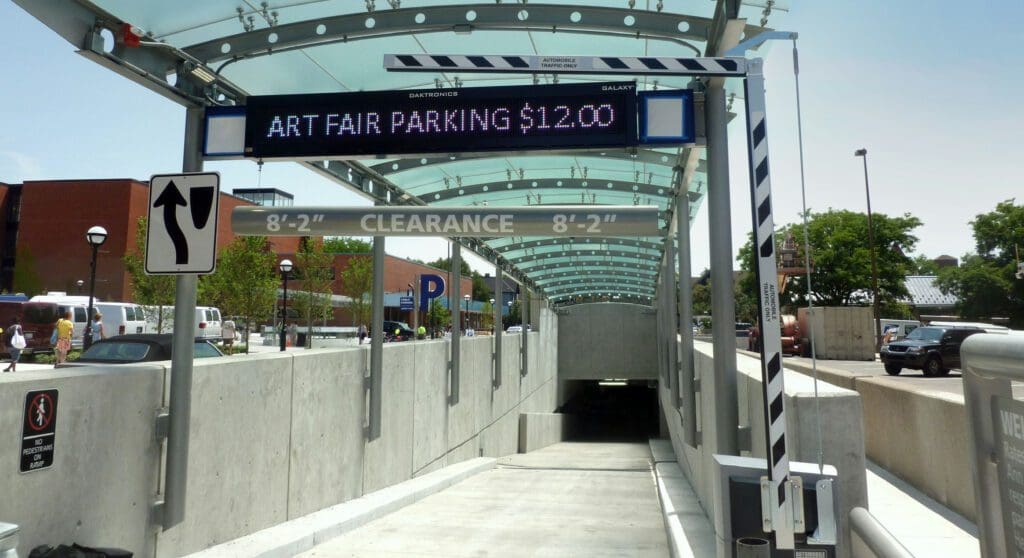
Underground parking is also an ideal way for cities to make better use of public real estate, encourage private development, and return public property to the tax roll.
Although the costs to build an underground parking structure can be substantial, the potential economic benefits must be considered when evaluating these types of projects.
The public planning benefits should also be considered. For instance, cities can dramatically improve the pedestrian experience and reduce traffic congestion by moving on-street spaces underground. Furthermore, moving parking underground helps maximize the available private development area, which can provide significant financial benefits to the entire community.
For example, a typical three-level above-grade parking structure built to accommodate 450 cars will require an approximate footprint of 50,000 square feet or 150,000 square feet of total area. If this space was utilized for above-grade commercial purposes, the economic impact could be substantial, generating jobs, retail or commercial activity, and significant tax revenue. The economic benefits would be considerable and long-lasting.
Underground parking is most commonly constructed beneath a building, park, or plaza, or even as additional parking for an above-ground parking structure when it is important to reduce the structure’s mass. Understanding the primary design and construction issues are essential when planning an underground parking structure.
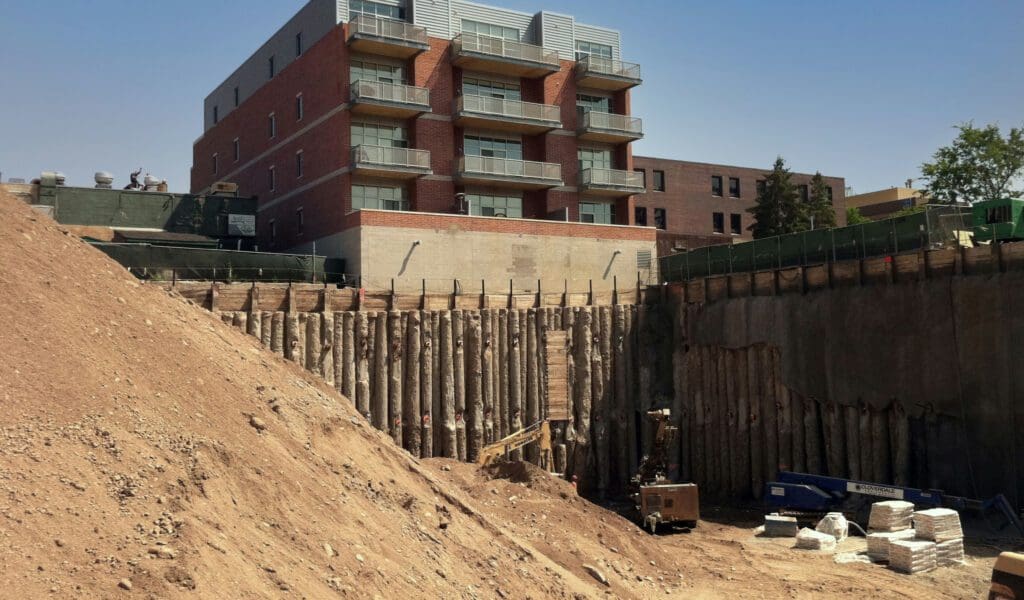
SITE AND DESIGN CONSIDERATIONS
Site conditions significantly impact the design and construction of underground parking. It’s typically utilized in densely developed urban areas, often to a zero-lot-line, which requires both temporary and permanent earth retention.
Temporary earth retention stabilizes the site perimeter during soil excavation and construction, and in some cases can reduce site dewatering volume requirements.
Permanent earth retention may be integrated with the building’s structural system or be independent of the building. If site conditions allow, independent systems may be used to provide natural light and ventilation into the structure. This added openness improves user comfort and reduces operational costs related to illumination and ventilation.
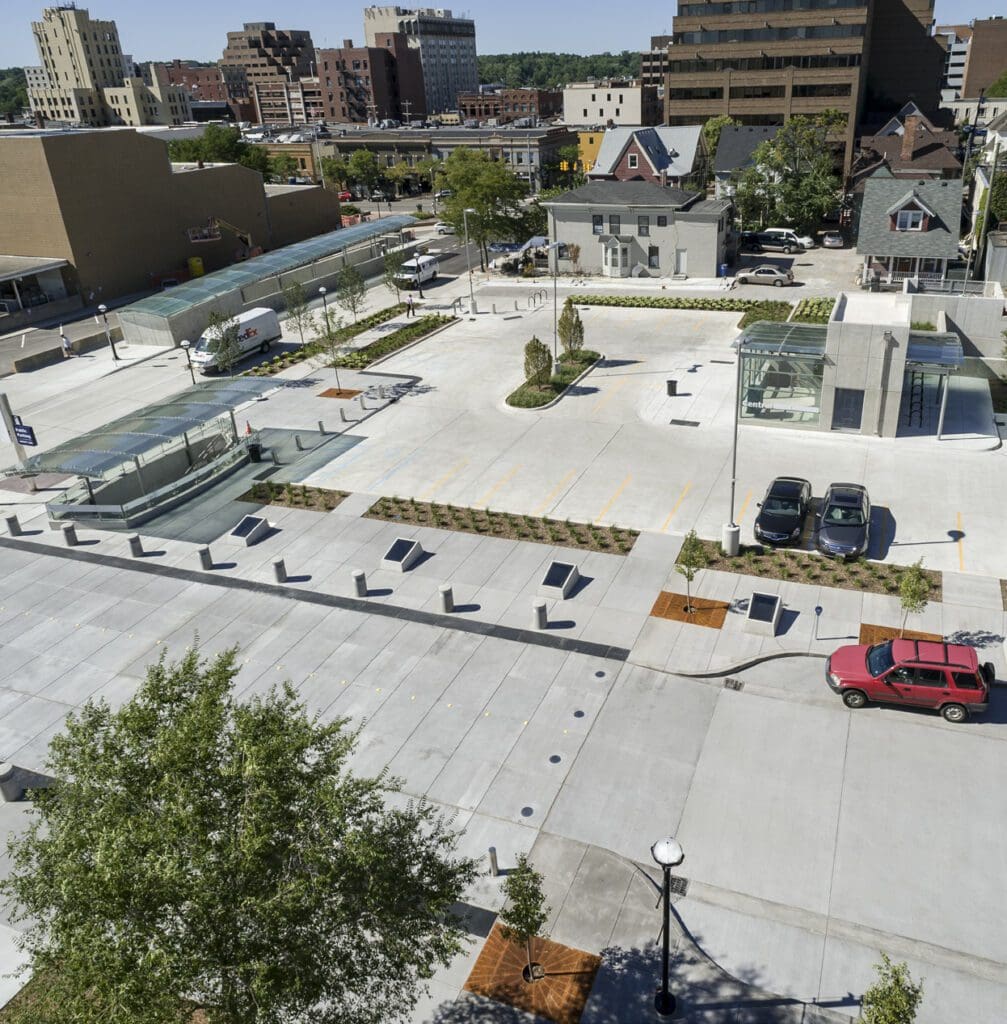
INTEGRATION OF PARKS, PLAZAS, OR BUILDINGS ABOVE PARKING
Underground parking is often utilized to reduce the overall height of a parking facility or take advantage of site topography. However, underground parking can also be built beneath a street-level plaza or park, or integrated into a multi-story commercial, residential, or institutional building.
Whatever the scenario, the primary parking goals should be maximizing parking, creating a welcoming environment, providing a cost-effective facility, balancing initial construction costs, long-term maintenance/operating costs, and user comfort with the economic benefits of the associated above-ground land use.
STRUCTURAL SYSTEMS
Selection of the structural system for a traditional above-grade parking structure is generally based on construction cost, durability and future maintenance costs, user comfort, owner preference, and construction schedule.
These decisions are equally important with underground structures, but additionally, underground parking structures must often sustain lateral earth loads, loads from adjacent buildings/roadways, and loads from a park, plaza, or building constructed above.
In evaluating structural systems, design objectives should include:
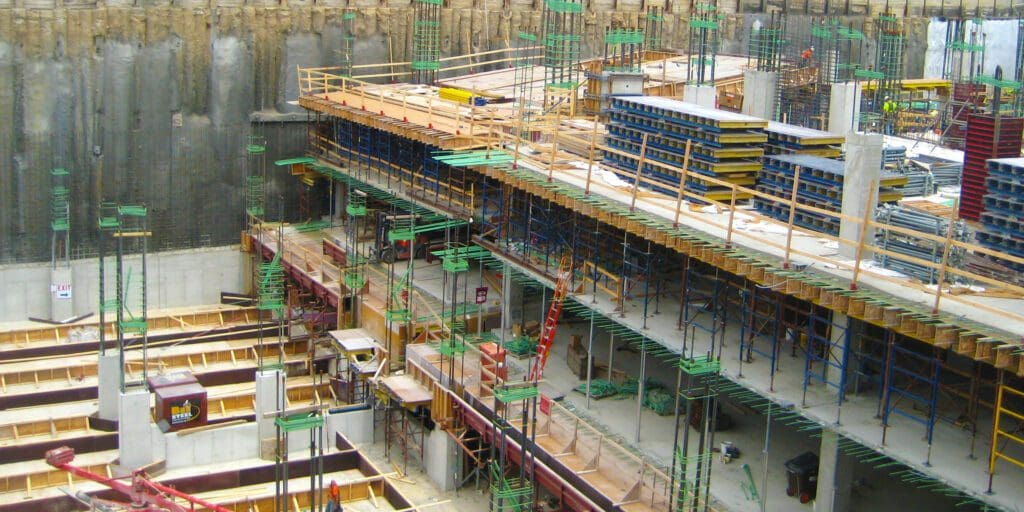
CONSTRUCTION COST
Parking structure costs vary and are based on a project’s location, architectural features, the structural system, user comfort considerations, durability/service life, site conditions, and the economic climate at the time of construction. However, with underground parking, there may be additional costs to address the following:
WGI maintains detailed historical construction cost data and produces an annual Parking Structure Cost Outlook Report. While this cost data is based on above-grade construction, it can be used as a basis for estimating below-grade costs.
DURABILITY AND LONG-TERM COSTS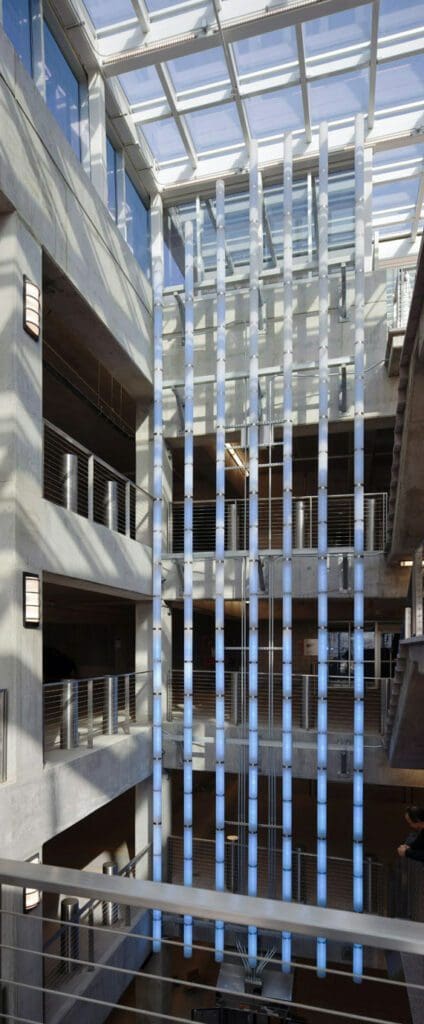
An underground garage’s structural system and overall durability requirements will command the greatest capital investment. These elements impact maintenance costs, determine the parking structure’s service life and affect the ongoing cost of parking for the facility’s service life, which should be 50 to 60 years.
The parking structure design should provide a balance between initial cost and life-cycle cost. State-of-the-art design features—high-strength concrete, low water-cement ratio concrete, corrosion inhibitors, coated reinforcing steel, and encapsulated post-tensioning systems—should be utilized for a high-quality, durable concrete structure.
Other design features, such as positive drainage, quality joint sealants, penetrating sealers, adequate coverage to the reinforcing steel, and a rigorous maintenance program, are also vital to the structure’s long-term performance.
Underground parking structures are particularly vulnerable to structural distress from concrete shrinkage and thermal volumetric change. Ignoring the structure’s stiffness characteristics may lead to cracking and premature deterioration. In severe conditions, forces generated by restraint can lead to structural safety issues.
Building fire-safety requirements, structural requirements, and personal-safety requirements often conflict when designing underground parking structures. Personal safety requires an open design with minimal visual obstructions.
In above-grade structures, this is generally achieved with open stairs (with exterior glass enclosures), glass-backed elevators, long-span construction, and open framing to resist lateral wind and seismic loads. However, most underground parking structures cannot be classified as “open” and require fire-rated (enclosed) elevators and stair cores.
Fire-rated elevator and stair cores typically have solid masonry or concrete enclosures. Furthermore, mechanical ventilation and fire sprinkler systems are typically required in underground parking structures. These requirements will increase construction cost.
Perhaps more importantly, the code requirements for underground parking can significantly reduce user line-of-sight within the parking areas, impairing views into stairways and elevator towers. When patrons can’t see into stairways and elevator towers prior to entering them, this may increase their apprehension. To promote a sense of safety and security while meeting life safety code requirements, garage designs should include fire-rated glass for glass-backed elevators and glass-enclosed stairs.
Short-span construction introduces additional building columns and is often used in underground parking structures to accommodate above-grade uses like mixed-use development and plazas. The columns serve double duty, supporting the underground garage itself, as well as above-ground development. Furthermore, interior shear walls are often used to resist retained earth loading.
Combined, these design considerations significantly reduce pedestrian line-of-sight and impede the opportunity to observe conditions in stairs/elevators prior to entering. While it’s not possible to eliminate this effect, visibility can be somewhat improved by installing bright LED lighting and painting the structure’s walls white to reflect that light throughout the garage.
ARCHITECTURAL CONSIDERATION AND THE PERCEPTION OF PERSONAL SAFETY
Safety—both actual and perceived—is a key element of any parking design, and traditional underground parking structures can be intimidating. Underground public parking facilities require greater attention to personal safety.
Enclosed stair towers, enclosed elevators, structural elements reducing visibility, artificial lighting, and lack of visual landmarks guiding pedestrians to their destinations often make users uncomfortable. Accommodating non-traditional parking structure uses such as buildings, plazas, parks, or roadways constructed above and supported on the structure may limit design flexibility.
There are a number of architectural features that can help create a sense of personal safety, including open stairways, glass-backed elevators using fire-rated glass, structural steel bracing in lieu of shear walls, daylighting provisions that project natural light to the lowest underground level, high ceiling heights, emergency call stations, security cameras, cellular phone repeaters to assure cell phone coverage, and a creative wayfinding system.
Figure 1 shows an open stair (with natural light through the glass roof) with a horizontal fire barrier that is activated when a fire is detected. This allows the stair to remain open during normal operations. Figure 2 shows steel bracing used in lieu of shear walls to maintain users’ open lines of sight.
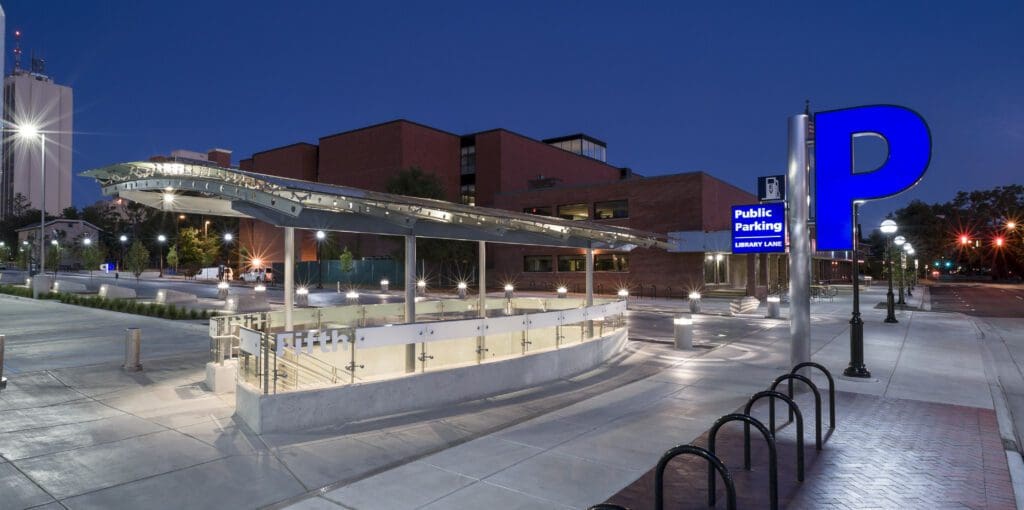
OPERATIONS AND MAINTENANCE COSTS
Operations and maintenance costs are influenced by design and construction. A lower initial cost generally produces higher maintenance and operations costs.
Primary cost considerations include staffing, electricity, and maintenance/repair costs related to concrete deterioration, waterproofing, metal corrosion, and equipment wear and tear.
There are other cost considerations to keep in mind:
While initial construction cost is an important design factor, a durable design reduces long-term maintenance and repair costs (i.e., life-cycle cost).
The U.S. Green Building Council’s (USGBC) LEED program no longer recognizes stand-alone parking structures as eligible for LEED certification. Regardless of certification, the parking structure should be designed for sustainability and energy use reduction. There are many strategies and approaches that can be incorporated into the project, contributing to an overall sustainability program.
These may include strategies such as using locally supplied materials; implementing construction-waste management; using materials with recycled content; installing low-emitting materials (low- or no-VOC) and LED/low-energy lighting; including natural ventilation; offering bicycle parking; locating the parking facility in close proximity to a bus stop; and many others. Installing parking guidance technology can also promote sustainability by dramatically reducing the amount of time cars spend circling parking aisles looking for an available parking space.
Underground parking structures can be expensive to build, but the benefits often justify the added cost by preserving valuable real estate for higher use, providing centrally located parking, creating urban parks/plazas, and removing parking from street frontages.
Contact our team of experts today and let’s discuss how making the shift to underground parking could benefit your facility.

WGI is a national design and professional services firm leading in technology-based solutions for the construction of public infrastructure and real estate development. At WGI, we’re providing Tomorrow’s Infrastructure Solutions Today.

Nicole Chinea, Senior Project Manager with our Parking Solutions division, serves on the TPTA Board of Directors and is this year’s Conference Chair.
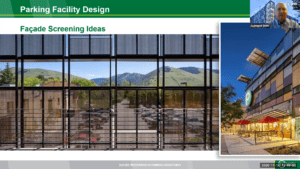
WGI’s parking experts recently discussed what building developers, owners, and operators need to consider about their facilities, and the strategies to discourage and prevent suicide attempts in their parking structures.
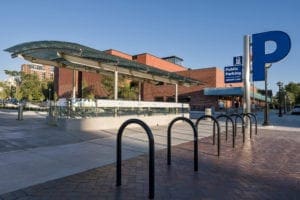
Underground parking is an ideal way for a city to make better use of public real estate, encourage private development, and return public property to the tax roll.
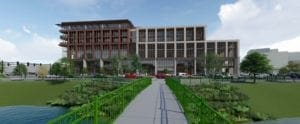
WGI developed functional and structural designs for Catalyst Development’s new $70M, seven-story, mixed-use building in Kalamazoo, Michigan.

Welcome back to WGI Unleashed! In this episode, we have the opportunity to chat with Jeremy Rocha, P.E., Senior Project Manager and Parking Solutions Expert.
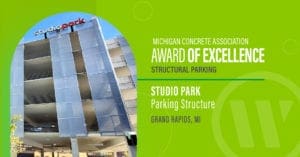
The Michigan Concrete Association recognized the Studio Park Parking Structure project with a 2021 Award of Excellence in the Structural Parking category.
You’ve been searching for a place like WGI. We look forward to meeting you soon.
Sign up to receive emails to hear our latest news and achievements in our monthly newsletter.
Enter your zip code, and we’ll personalize your experience with local projects, office locations, team members, and more.
WGI supports its associates with meaningful opportunities for growth, strong benefits and perks, while we work collaboratively with clients and co-consultants to shape and improve communities.






WGI is a dynamic organization with opportunities nationwide for engineers, land surveyors, landscape architects, environmental scientists, and architects.